However, the uncontrolled use of antibiotics has led to the development of bacterial resistances, reducing treatment options for certain infectious diseases.
The uncontrolled use of antibiotics has led to the development of bacterial resistances, reducing treatment options for certain infectious diseases.
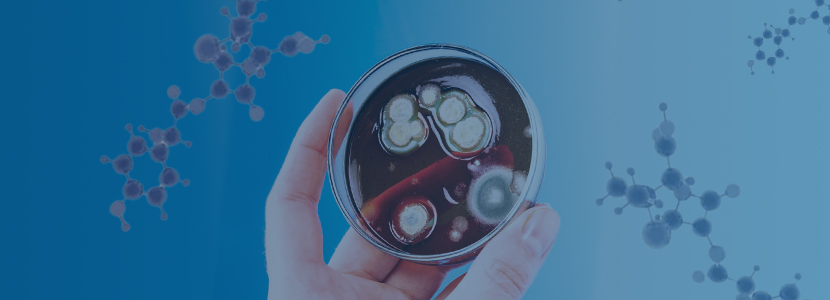
Antibiotics are one of the most important therapeutic discoveries in the history of medicine, revolutionizing the way bacterial infections are treated and reducing the mortality and morbidity associated with them.
However, the uncontrolled use of antibiotics has led to the development of bacterial resistances, reducing treatment options for certain infectious diseases.
ANTIBIOTIC RESISTANCE
Inappropriate use of antibiotics is a serious public health problem worldwide, as it increases the risk of selecting resistant bacteria or resistance determinants.
Indiscriminate use of antibiotics favours the survival of bacteria carrying resistance genes, while sensitive bacteria die, leaving an ecological niche for resistant bacteria to proliferate.
1 – APPEARANCE
Actions that encourage the emergence of resistance:
2 – PROPAGATION
This resistance can spread rapidly through the exchange of genetic material between different bacterial species, and these resistant bacteria circulate between humans and animals through food, water and the environment.
3 – AMPLIFICATION
Improper handling operations in intensive livestock production systems play an important role as resistance amplifiers, regardless of their origin, and poor biosecurity has been found to favour the spread of resistance.
CONSEQUENCES OF ANTIBIOTIC RESISTANCE
WHAT SHOULD WE BASE OUR CHOICE OF ANTIBIOTIC ON?
REFERENCE PARAMETERS
MINIMUM INHIBITORY CONCENTRATION – MIC
The MIC of an antibiotic is the minimum concentration needed to STOP the growth of a “test” microorganism in a standard inoculum.
MINIMUM BACTERICIDAL CONCENTRATION – MBC
The BMD of an antibiotic is the minimum concentration needed to ELIMINATE a “test” microorganism in a standard inoculum.
The determination of MIC and MBC allows to establish which is the minimum dose of antibiotic effective against a given pathogen
By subjecting the bacteria to different dilutions of the antibiotic, it is possible to determine the MIC and the MBC.
MIC is considered to have been reached when there is no longer growth of the bacteria in the culture medium with the antibiotic in question.
MBC is reached when, when the bacteria incubated in the antibiotic broth are seeded on antibiotic-free agar, no bacterial growth occurs.
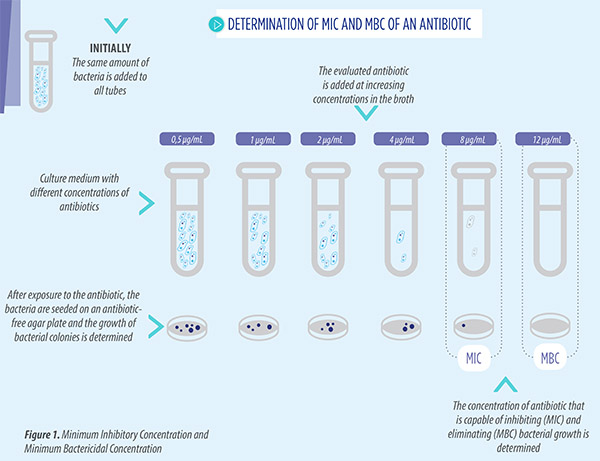
SENSITIVITY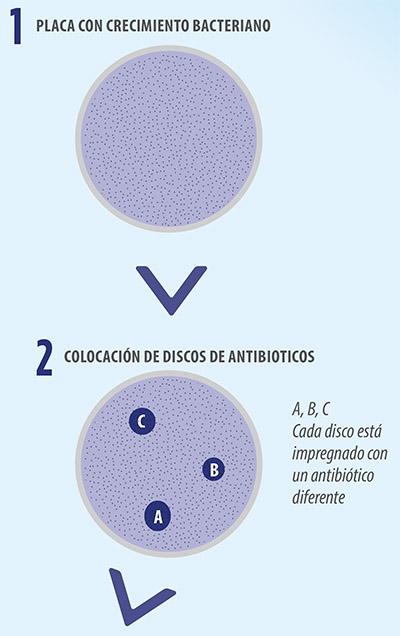
An antibiogram is performed to determine the sensitivity of a bacterium to different antibiotics (Figure 2):
The bacterium is sown in an antibiotic-free growth medium.
Discs impregnated with the antibiotics to be tested are placed.
After the incubation period, the inhibition halo (area of the agar around each disc where there is no bacterial growth) is determined, so that the greater this halo, the greater the sensitivity of the bacteria to the antibiotic present in the disc.
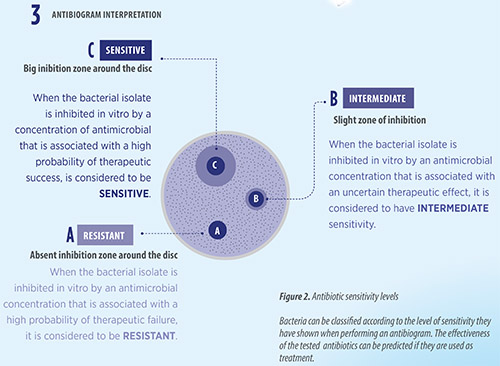
TYPES OF ANTIBIOTICS
Antibiotics are classified according to their mechanism of action and their therapeutic behaviour.
MECHANISM OF ACTION OF THE ANTIBIOTIC
The mechanism of action of the antibiotic largely determines the effectiveness of the treatment. We can find two main groups according to their activity:
BACTERICIDES : They cause the death of the microorganisms responsible for the infectious process.
BACTERIOSTATICS : They inhibit the bacterial growth, although the microorganism remains viable, so that when the treatment is suspended, it can multiply again.
THERAPEUTIC BEHAVIOUR
There is a relationship between the plasma concentration of the drug and the antimicrobial activity that marks its effectiveness against bacteria, so we can classify these products according to their therapeutic behavior, that is, “how they eliminate or inhibit the growth of bacteria:
DEPENDENT CONCENTRATION” EFFECT : The increase in the concentration of the drug above the MIC, against a certain pathogen, increases the mortality of the bacteria.
DEPENDENT TIME” EFFECT : The increase in the concentration of the drug above the MIC, against a certain pathogen, does NOT significantly increase the mortality of the bacteria. In this case, the effect of the antibiotic depends on the time of exposure of the bacteria to the action of the drug.
RATIONAL USE OF ANTIBIOTICS
PRUDENT USE
Prudent use of antibiotics implies:


CRITICAL POINTS
To meet this challenge that involves establishing a critical point control system:



STEPS TO BE CONSIDERED







NATIONAL PLAN FOR ANTIBIOTIC RESISTANCE: the Spanish example
OBJECTIVE
To reduce the contribution of antibiotic use in human and veterinary medicine to bacterial resistance.
To preserve the existing therapeutic arsenal.
Adapted from the conference offered by Margarita Arboix (UAB Rector) in porciFORUM 2017
Subscribe now to the technical pig magazine
AUTHORS

Bifet Gracia Farm & Nedap – Automated feeding in swine nurseries

The importance of Water on pig farms
Fernando Laguna Arán
Microbiota & Intestinal Barrier Integrity – Keys to Piglet Health
Alberto Morillo Alujas
Impact of Reducing Antibiotic use, the Dutch experience
Ron Bergevoet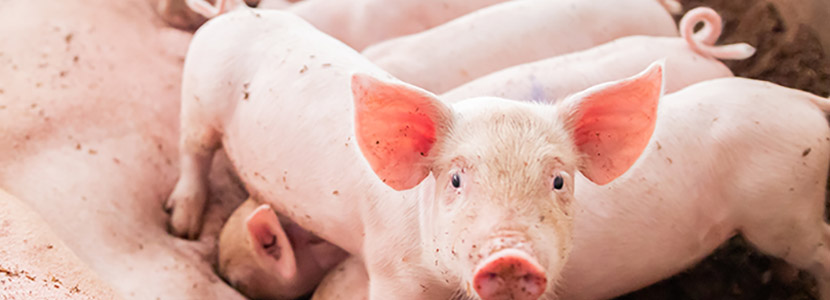
The keys to successful Lactation in hyperprolific sows
Mercedes Sebastián Lafuente
Addressing the challenge of Management in Transition
Víctor Fernández Segundo
Dealing with the rise of Swine Dysentery
Roberto M. C. Guedes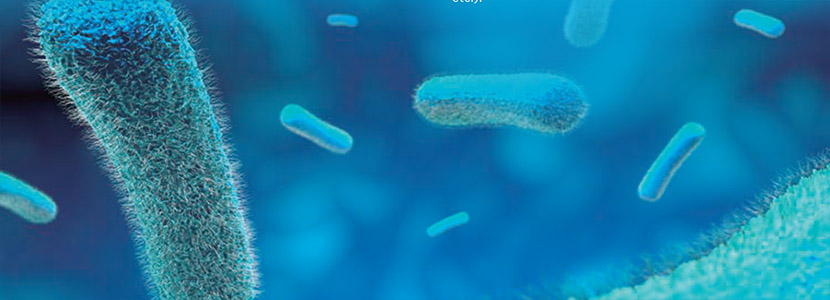
Actinobacillus pleuropneumoniae – What are we dealing with?
Marcelo Gottschalk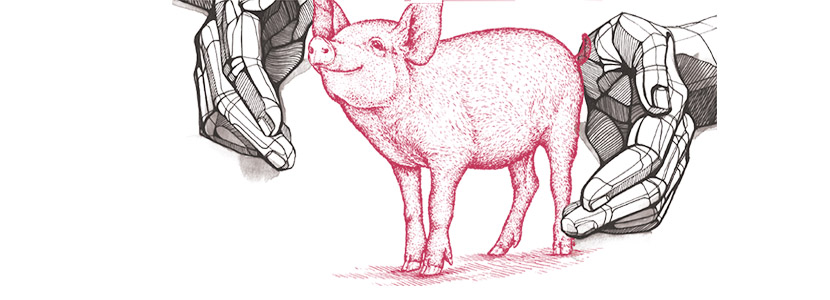
The new era of Animal Welfare in Pig Production – Are we ready?
Antonio Velarde
Gut health in piglets – What can we do to measure and improve it?
Alberto Morillo Alujas
Interview with Cristina Massot – Animal Health in Europe after April 2021
Cristina Massot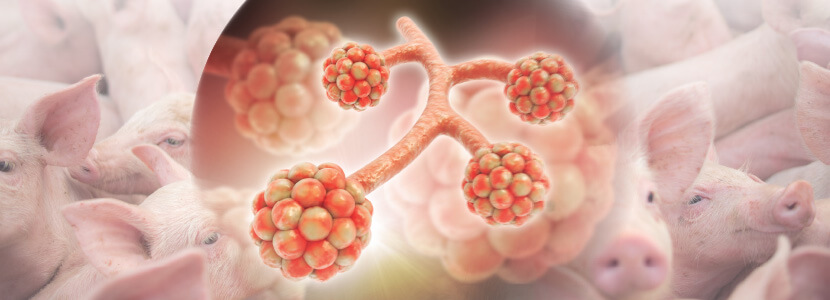
Differential diagnosis of respiratory processes in pigs
Desirée Martín Jurado Gema Chacón Pérez